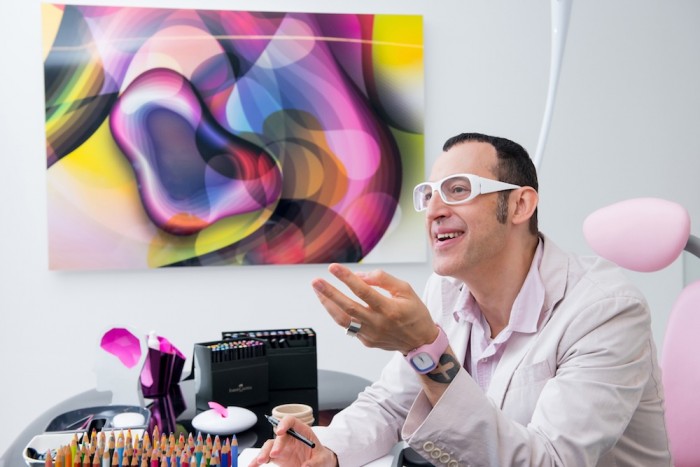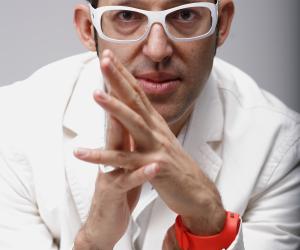
Karim Rashid has won nearly every major design award, has over 3 000 designs in production and has collaborated with global brands and designers around the world. It’s fair to say that Rashid is a big deal in design. You could write a book about his career, and people have – if not to document the expansive scope of his portfolio then to understand the man behind the prolific design icon. The ubiquity of his name and work is evidence of his dexterity as a designer, effortlessly shifting between different disciplines.
In light of the recent launch of his new monograph XX, which highlights Rashid’s ability to cross boundaries between various forms of design, we wrote to him enquiring about his creative diversity, and here is what we found out.
From fashion and furniture to product design and art, Rashid gets an equal amount of satisfaction designing in every creative field: “I get really passionate about designing a pen, jewellery, perfume bottle, liquor bottle, coffee cup, as much as I do designing a brand identity, a carpet, flooring, furniture, interior design, or a building.”
Moving from one discipline to the next is a natural transition for Rashid, who believes in hybridised forms of design that can bring together many spheres of the industry: “I see the future of our aesthetic world crossing all the aesthetic disciplines so that design, art, architecture, fashion, food, music, fuse together to increase our experiences and bring greater pleasure to our material and immaterial lives.”
In a recent conversation at the Museum of Arts and Design in New York, Rashid made reference to a notion of cross-pollination in his work, which offers insight into why he immerses himself into numerous design experiences. On this subject, he told us: “It is my diversity that affords me the ability to cross-pollinate ideas, materials, behaviours, aesthetics and language from one typology to the next, from one scale to another, from one discipline to another.”
Underneath Rashid’s ability to cross-pollinate lies his superseding philosophy about pluralist design. When we asked about his diverse portfolio, he said: “One of my favourite sayings is ‘don’t specialise’. I am a pluralist designer. I do not like the idea of specialisation and admire creative people who touch many different aspects of visual culture, like the whole idea of the Warholian factory, where you could move around in all the disciplines of the applied major arts.”







